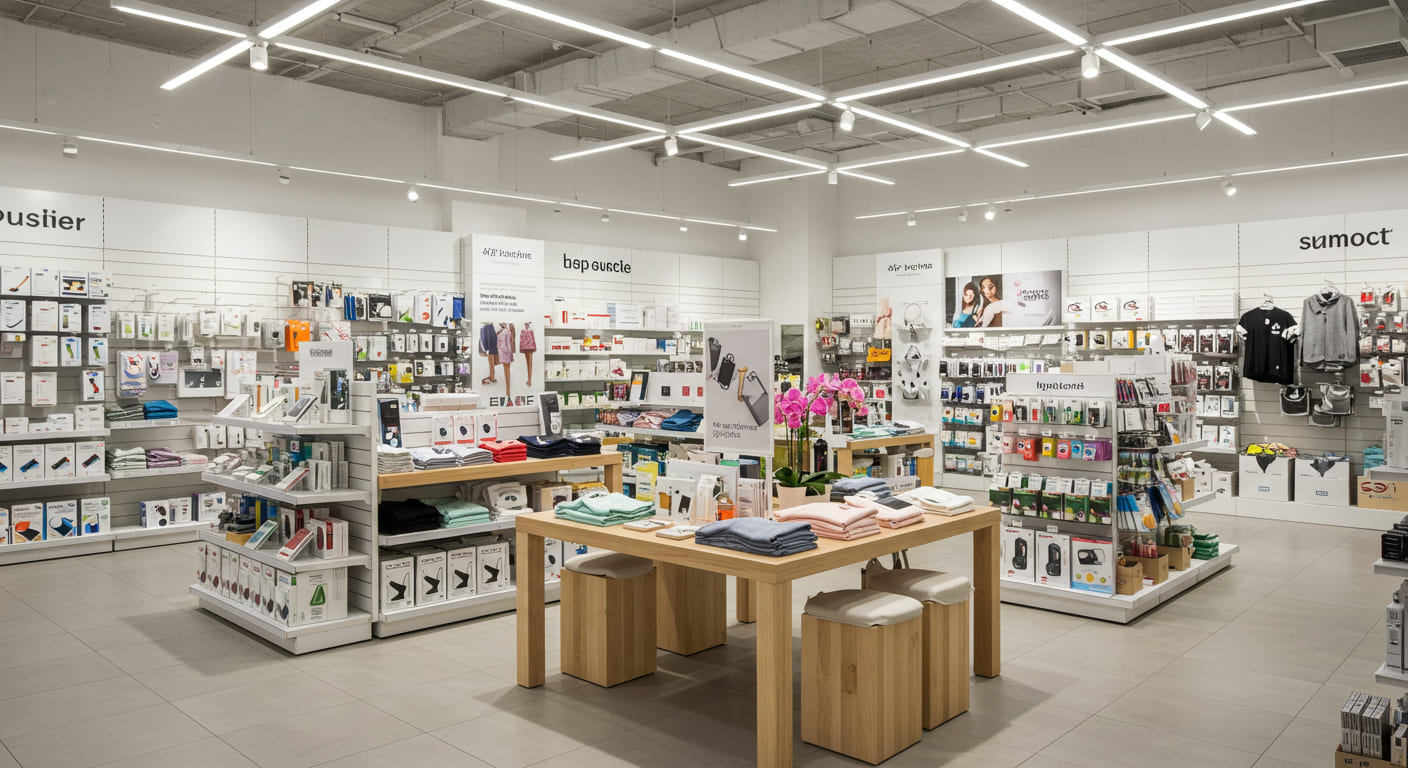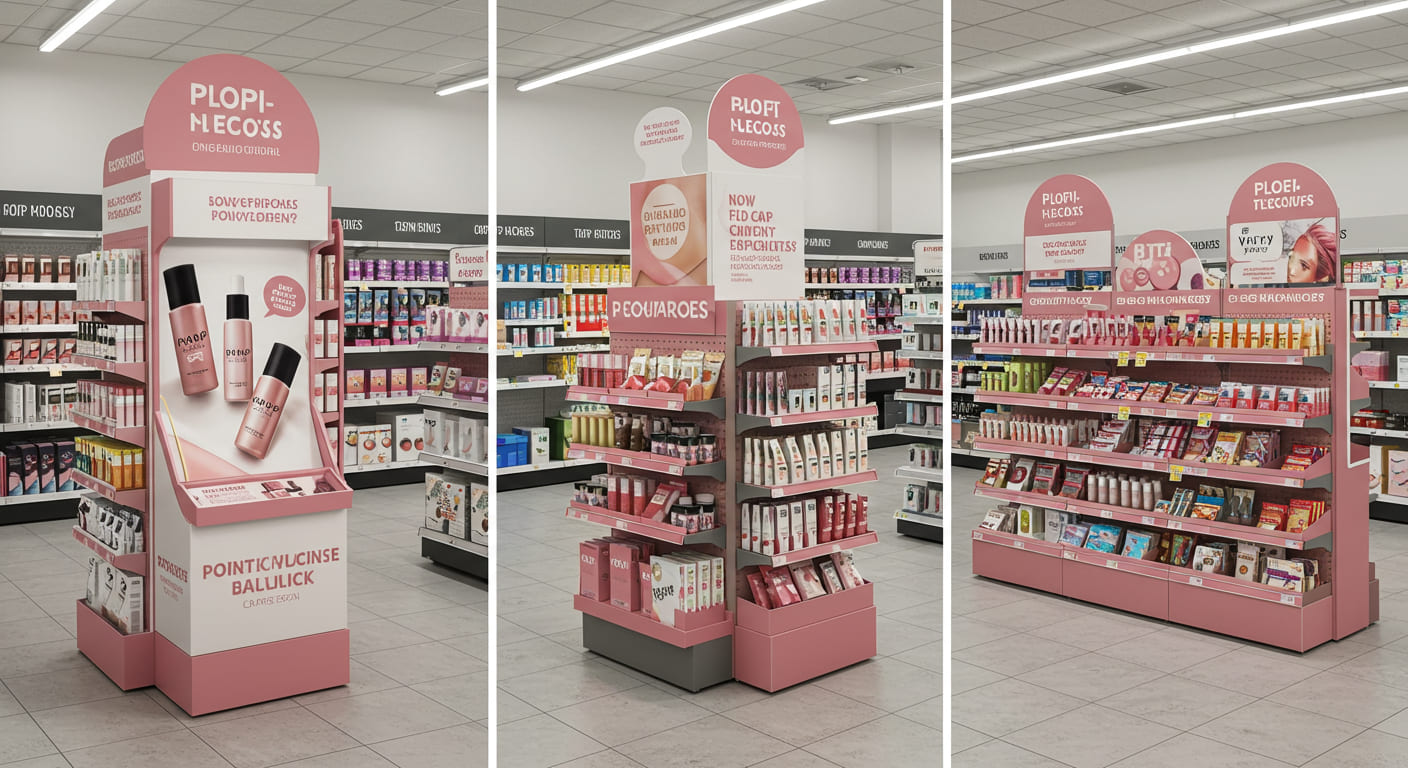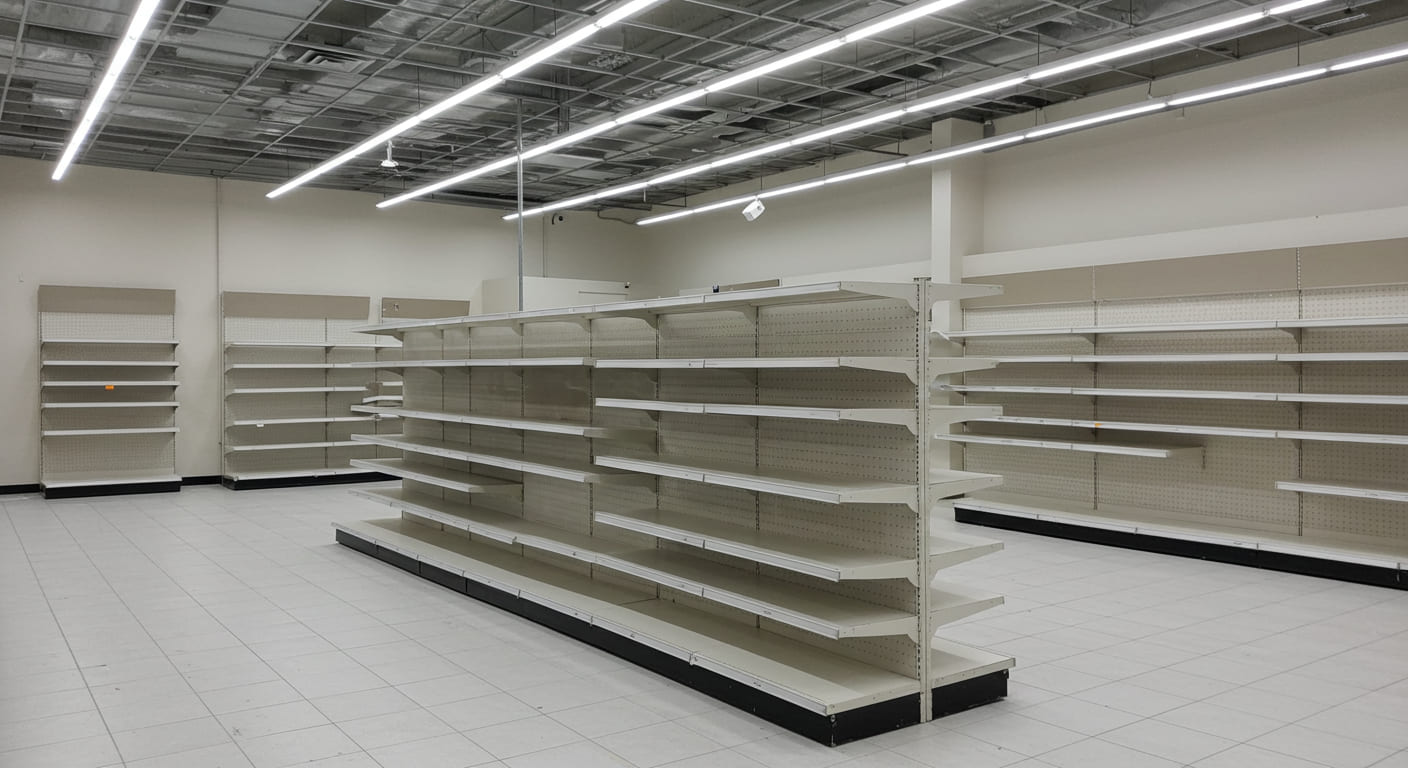
What Are Store Fixtures and Displays?
Is your store’s layout confusing and your products getting ignored? Without the right hardware, your retail space fails to guide customers or highlight your best items, costing you sales.
Store fixtures are the permanent furniture like shelving and racks that form the store’s skeleton. Displays are the specific setups on those fixtures designed to actively attract customers and sell products.

I own a factory that makes both fixtures and displays, and I see designers like Mark use these terms every day. Understanding the difference is incredibly important. One is the skeleton of your store, and the other is the muscle that drives sales. Getting them right is the foundation of a great retail experience. Let’s break down exactly what they are and how they work for you.
What are the displays in stores called?
Do you see unique product stands but don’t know what to call them? Not knowing the right names makes it hard to talk to your team or suppliers about what you need.
Displays in stores are called many things based on their form and function. Common names include POP (Point of Purchase) displays, end caps, floor stands, display cases, and risers.

Dive Deeper
Knowing the industry terms helps you get exactly what you want. Think of it like a toolbox, where each tool has a specific name and job. A POP display is a small unit placed near the checkout to encourage last-minute impulse buys. An end cap is a display at the end of an aisle, a prime spot for promotions. A floor stand is any standalone display that sits on the floor away from the main shelving. A display case is a secure, often glass, container for high-value items. Finally, risers are simple blocks or stands used inside a display to lift products up and create different heights. When a designer comes to my team and says, "I need a promotional display for the end of the aisle," we know immediately they need an end cap. This shared language saves a lot of time and money. It’s the first step in turning an idea into a real, physical product.
What are store fixtures?
Do you think of shelving and racks as just boring background elements? This view ignores their critical role in defining your store’s entire layout and customer experience.
Store fixtures1 are the foundational, permanent or semi-permanent pieces of furniture that structure your retail space. This includes things like gondola shelving2, wall systems, counters, and cash wraps.

Dive Deeper
If displays are the actors, then fixtures are the stage itself. They are the workhorses of your store. Gondola shelving creates the aisles. Wall systems turn your perimeter walls into valuable selling space. Your cash wrap (the checkout counter) is a fixture that serves a vital function. The key difference is permanence and purpose. Fixtures are the "bones" of your store, meant to last for years. Displays are often more temporary, changing with seasons or promotions. The design of your fixtures is a huge engineering task. When my factory gets a design for a new store, my engineers and I analyze the plans carefully. We have to think about what the shelves will hold. Heavy paint cans need stronger steel fixtures than light bags of chips. This is where our collaboration is so important. We can optimize the structure—making it strong where needed and lighter where possible—to deliver a safe, effective, and cost-efficient fixture system.
| Element | Purpose | Examples | Lifespan |
|---|---|---|---|
| Fixtures | To structure the store & hold inventory | Gondolas, Racks, Counters | Long-term (Years) |
| Displays | To promote & sell specific products | End Caps, POP Stands, Cases | Short-term (Seasonal/Promotional) |
How effective are in-store displays?
Have you spent money on displays that don’t seem to increase sales? This happens when displays are seen as just decoration instead of powerful, strategic sales tools.
In-store displays are extremely effective when done right. A good display can stop a customer, communicate a key benefit in seconds, and significantly increase sales for that specific product.

Dive Deeper
Effective displays directly influence a customer’s decision to buy. I have seen the sales data myself. One of my clients was selling a new energy bar. It was just sitting on the shelf next to all the other bars, and sales were slow. We worked with their designer to create a custom floor stand with bold graphics, a "Try Me" sample dispenser, and a unique shape that stood out. In the stores that used our display, sales of that bar tripled in the first month. Why? Because the display did three things. First, it grabbed attention. Second, it made it easy for the customer to understand the offer. Third, it removed risk by offering a free sample. That’s effectiveness. This is where having a factory in China is a huge advantage. We can quickly combine a metal frame for strength, printed PVC foam board for graphics, and an injection-molded tray for the samples, all at a low cost. We can build a display that works hard for you.
What is retail store display?
Are you still thinking of displays as just single product stands? This narrow view misses the bigger picture of how everything in your store works together to create a single impression.
A retail store display1 is the total visual presentation2 of your products. It is the combination of fixtures, lighting, props, and strategic product placement, all working together to tell a story and persuade a customer.

Dive Deeper
Think of it this way: a single stand is a display, but the overall effect is the retail store display. It’s how you use all your tools together. The retail store display is the end result of your entire visual merchandising strategy. It’s the scene you create for your customer. The process of creating this is a close partnership between a designer and a manufacturer. A designer like Mark will create a beautiful drawing of the final scene. But my job is to help him build it. I might say, "That wood finish you want is very expensive. But we can achieve the same look with a high-quality laminate on MDF, which will save you 40%." Or, "For that lighted sign, we can use new LED panels that are brighter and use less energy." Coming to China for a visit is the best way for designers to get this knowledge. They see new materials and processes in my factory, which gives them new ideas for creating effective and affordable retail store displays.
Conclusion
Fixtures are the bones of your store and displays are the sales force. When you understand how they work together, you can turn your retail space into a powerful engine for your business.